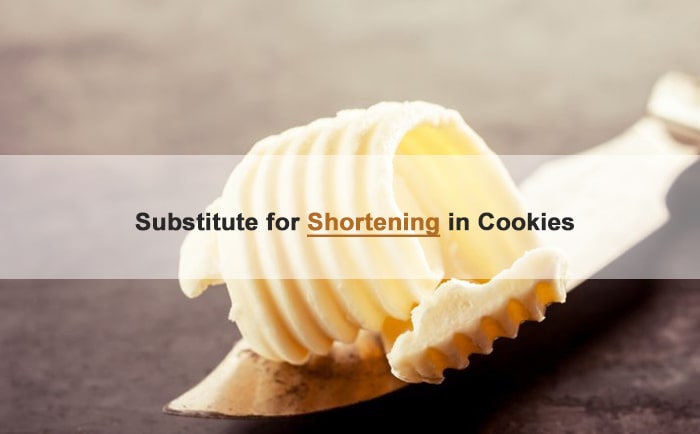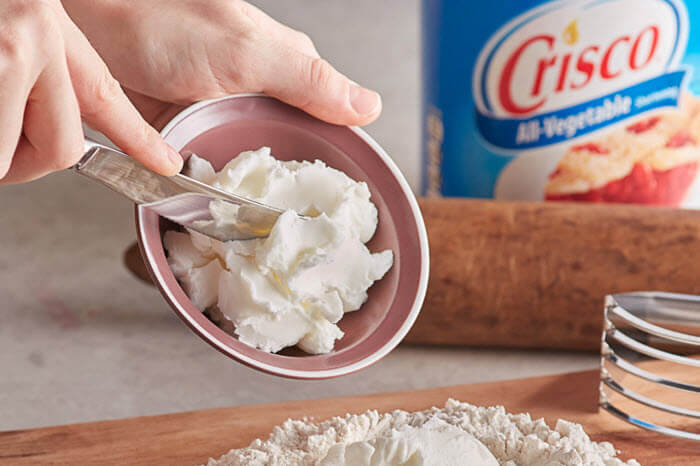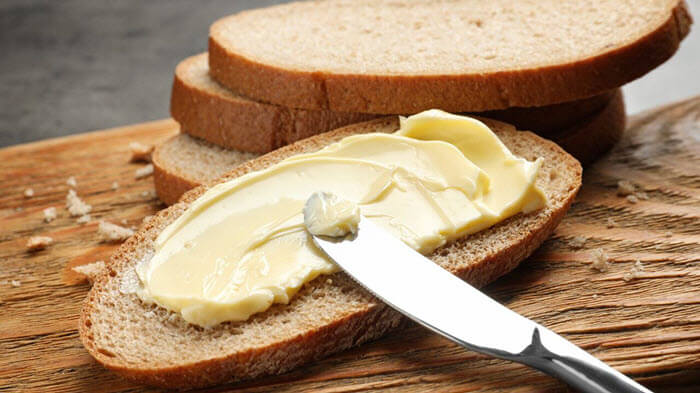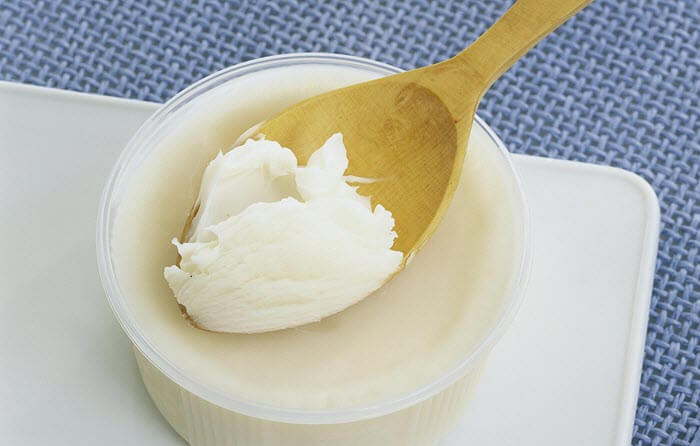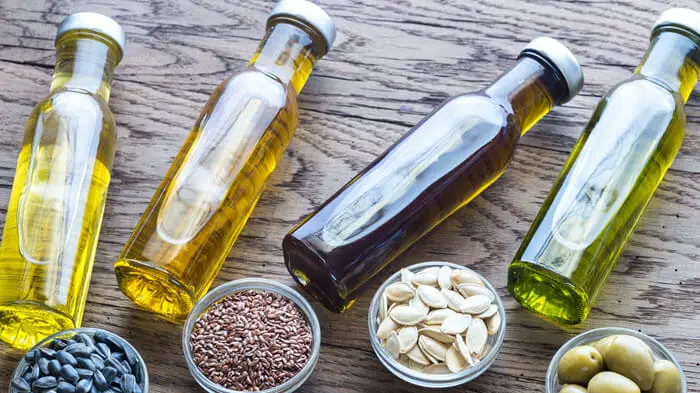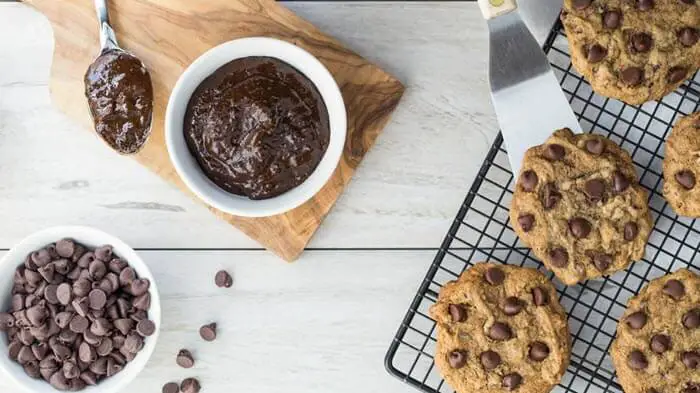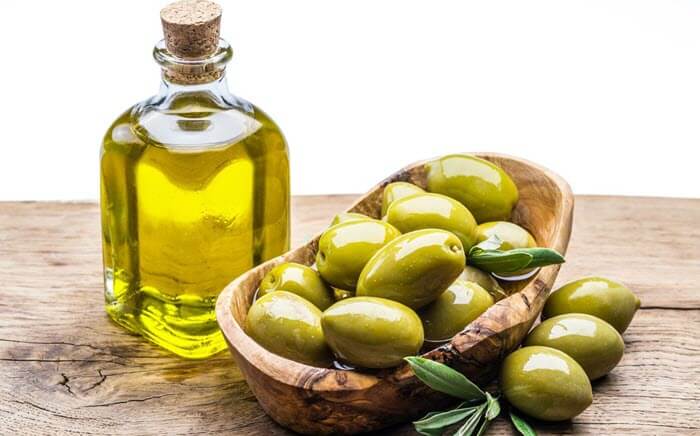If you’re reading this article, the chances are that you use shortening when baking cookies, and you would want to know various substitutes for shortening.
You may choose shortening substitutes for various reasons. Possibly you do not have access to shortening, or you’re looking for a shortening substitute with lower trans fats.
Read on to learn about the eight substitutes for shortening in cookies compiled in this article.
First forward, let’s find out what shortening is.
Table Of Contents
What is Shortening?
Shortening in cookies refers to the use of 100% far without water in it. More so, your baking recipe does not create any steam.
The unavailability of water means that shortening reduces gluten production; hence your cookies tend to be more tender and softer.
Generally, shortening has a high melting point; therefore, the eggs and flour in your recipe have some extra moments to settle and set before your shortening melts.
Consequently, your cookies will appear not as flat and taller. Shortening does not have any real distinct taste.
Why Use Shortening in Cookies
When baking cookies, shortening helps to trap more air in the doughs.
Recall that shortening has a higher melting point; hence your baking recipe produces end products that rise a little higher, have a softer and lighter interior texture, and hold their shapes while baking.
The trans fat contained in shortening is unaffected after melting. It reforms into semi-solid shapes allowing your cookies to stay longer and remain soft.
Let’s now study the various substitute for Crisco in cookies.
What Can You Substitute for Shortening in Cookies
1. Butter
Most bakers enjoy baking using butter and keep it within their access in most cases. Butter is one of the most accessible go-to substitutes for shortening in cookies.
When using butter in place of shortening, you may consider a one-to-one ratio to avoid complicating things. This ratio works perfectly well for most recipes.
Despite being an almost perfect replacement for shortening, the resulting products may vary significantly when baking cookies.
2. Coconut oil
Coconut oil has gained popularity over the past two decades, with some people considering it among the superfoods.
Bakers can replace shortening with coconut oil at a one-to-one ratio depending on the amount of shortening in the recipe.
Note that using coconut oil instead of shortening may affect the flavor of your cookies. Fortunately, most people do not mind having a coconut flavor in their cookies.
However, some flavors may not pair well with coconut flavor, so you should be choosy on this part.
3. Margarine
Margarine is a solid spread mainly used for baking, cooking, and flavoring recipes.
Regularly, bakers like using margarine as a replacement for butter; hence it fits well to be used as a substitute for shortening in baking cookies.
One thing to note is that you may need to add an extra spoonful of margarine for each cup of shortening in your recipe.
Margarine has water and contains lower fat content; therefore, it is wise to use a little more for better yields.
4. Lard
Lard may not cross your mind often when looking for shortening substitutes in coockies, but it is one of the most accessible swaps for shortening.
Lard is primarily valuable for baking savory recipes such as pot pie, savory scones, biscuits, and cornbread.
However, it can be a good fit for baking cookies, especially if you’re good at using it.
Bonus: we recently made a research on finding the best substitute for lard, and finally found 12 healthy options.
5. Vegetable Oil
Some recipes may call for melted shortening. In such cases, you can use vegetable oil as an alternative.
Ensure you do not use vegetable oil as a swap for shortening in recipes such as biscuits, scones, or pie dough because you are not likely to get pockets of fat, and your dough may not puff up as expected.
It is safe to consider a one-on-one ratio when substituting shortening with vegetable oil.
However, you should keep in mind that your cookies may not taste like those baked using shortening. They might appear dense when you use vegetable oil in place of the shortening.
6. Prune Puree
Some people do not find prune puree sound very glamorous. However, prune puree is a low-calorie, low-fat shortening substitute for cookies.
Prune puree contains pectin and sorbitol baking ingredients; hence, it can be used in a one-to-one ration when replacing shortening.
- Pectin is a natural ingredient that tends to cream and retain moisture, causing air bubbles similar to fat.
- Sorbitol is a sugar alcohol that naturally retains moisture.
Baking cookies with prune puree in place of shortening allows them to stay chewier for an extended period. However, the cookies may not have that crispy feel.
The end products of your cookies will have a darker color when you use prune puree as a sub for shortening. Your cookies might have a slightly different flavor, but that depends highly on the personal opinion of the one eating the cookies.
7. Olive Oil
Olive oil is among the staples that may likely not miss in everyone’s kitchen most of the time. It is a common ingredient for baking and cooking.
Olive oil is a possible shortening replacement for cookies; however, it will change the flavor of your goodies. It has a distinct flavor, while shortening is considered flavorless and bland.
Therefore, when substituting shortening with olive oil, ensure you use a high-quality one with a flavor.
8. Ghee
Ghee is a form of butter with water and milk solids removed, which can be useful in higher degree heat cooking and baking recipes such as frying.
Use a one-to-one ratio when replacing shortening with ghee, especially when you want your cookies to have an extra butter taste.
Bonus: want a vegan substitute for ghee? Check out this post.
FAQs About Shortening in Cookies
Yes, shortening and butter can be interchangeably used in baking cookies. A one-to-one ratio will be perfect for your baking.
However, the end products might appear and taste different since butter and shortening are two distinct baking ingredients.
Note that shortening is 100 percent hydrogenated fat containing no water, while butter is 80 percent butterfat and 20 percent water when occurring naturally.
Yes, you can substitute margarine for shortening in a cookie recipe. Some bakers enjoy using margarine because, besides baking, it works as a flavoring ingredient.
Bakers use shortening in cookies because it helps in trapping more air bubbles in doughs.
Since shortening has a higher melting point, it allows your cookies to rise a little higher, hold their shapes, and have a lighter and softer interior texture.
Butter is considered the best shortening substitute for cookies due to its flavor. However, your cookies might rise a little less. Butter is used at a one-to-one ratio as a substitute.
Conclusion
This article has discussed eight ideal shortening substitutes for cookies; coconut oil, butter, margarine, lard, vegetable oil, prune puree, olive oil, and ghee.
Bakers can choose any of the eight options depending on their needs. However, the end products’ taste and appearance may change slightly.
Don’t be stressed when your recipe directs you to use shortening and you do not have it on hand; you can use other products that substitute shortening.
Resources
- What Can You Substitute for Molasses in Cookies
- https://www.tastingtable.com/667451/what-is-a-dutch-oven-and-why-do-you-need-one/
- https://www.landolakes.com/expert-advice/butter-vs-shortening-in-baking/
- https://www.thekitchn.com/shortening-vs-butter-in-cookies-whats-the-difference-213812

